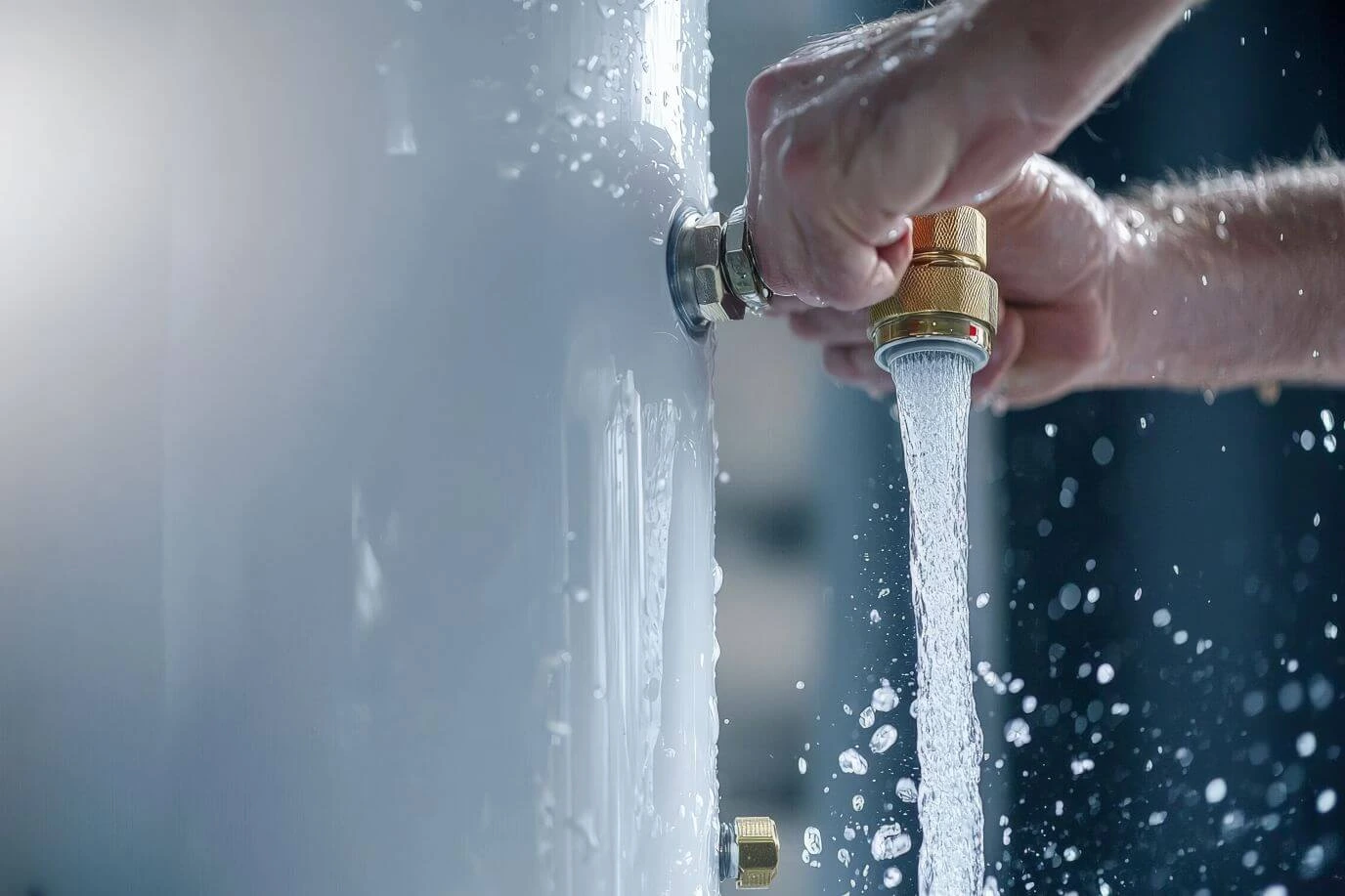Flushing your water heater is a simple but essential maintenance task that can help extend its lifespan and improve its efficiency. Over time, sediment and mineral buildup can accumulate at the bottom of your tank, reducing the heater’s performance and potentially leading to costly repairs. By learning how to flush a water heater, you can prevent these issues and ensure your system operates smoothly. In this guide, we’ll walk you through the steps on how to flush a water heater properly, so you can maintain a steady supply of hot water in your home and keep your system in top condition.
Steps to Flushing Your Water Heater
The process involves draining the tank, clearing out the sediment buildup, and refilling the system to ensure it’s running efficiently. By following a few simple steps, you can help maintain the performance of your water heater and extend its lifespan. In the next sections, we’ll break down each step of how to flush a water heater, making the entire flushing process simple and straightforward.
Turn Off the Cold Water Supply
The first step in flushing your water heater is to turn off the cold water supply. Locate the cold water spigot, which is typically found at the top of the water heater where the cold water enters the tank. Once you’ve located it, turn the water supply valve clockwise to shut off the flow of cold water into the tank. This prevents any additional water from entering the heater while you flush out the sediment buildup.
Turn Off the Power to the Water Heater
Before proceeding with flushing your water heater, it’s important to turn off the power to the unit to ensure your safety. For electric water heaters, this means going to your home’s electrical panel and locating the breaker box. Once there, switch off the circuit breaker that controls the water heater. This step is essential to prevent the heating element from turning on while the tank is being drained, which could cause damage to the unit. For gas water heaters, you’ll want to turn the gas valve to the “off” position to cut off the fuel supply. Always double-check that the power is off before moving on to the next step.
Turn On a Hot Water Faucet
Next, turn on a hot water faucet in your home. This step helps relieve any pressure in the system and allows air to flow through the water lines while you drain the tank. By opening a faucet, you create a pathway for the water to flow out more smoothly, reducing the risk of suction and ensuring a steady flow of water from the tank during the flushing process. Keep the faucet running throughout the process to ensure proper drainage and to help the water heater empty completely.
Attach a Garden Hose to the Hot Water Heater
Now, it’s time to attach a garden hose to the drain valve located near the bottom of your hot water heater tank. This is the valve that allows water to be drained from the tank safely. Ensure the other end of the hose runs to an appropriate drainage location, such as a floor drain or outside, to prevent any water damage to your home or appliances. Before opening the drainage spigot, double-check that the hose is securely attached and that it won’t move while draining. Once everything is in place, you’re ready to begin the process of emptying the water heater tank and flushing out the sediment that has built up over time.
Open the Drain Valve
With the garden hose securely in place, it’s time to open the drain valve. Carefully turn the water heater drain valve to allow the water to flow out of the tank. As the water drains, it will carry out any damaging sediment that has accumulated at the bottom of the tank. This step is crucial for preventing excessive sediment buildup, which can reduce your water heater’s efficiency and life span.
Allow Time for Water and Sediment to Drain
Once the drain valve is open, give the water and sediment plenty of time to drain from the water tank. As the water flows out, it will carry along any mineral deposits that have built up inside the tank. Depending on the amount of sediment, this process may take a few minutes to an hour. It’s important to be patient and allow the tank to empty completely.
Turn On the Cold Water Valve
After the tank has fully drained, it’s time to turn on the cold water valve to begin the water heater flush. Opening the cold water valve allows fresh water to flow through the tank, flushing out any remaining sediment and mineral deposits. Let the water run for a few minutes to ensure the tank is thoroughly cleaned.
Close the Drain Valve and Remove the Hose
Once the water heater flush is complete and the tank is clear of sediment, it’s time to close the drain valve. Turn the valve clockwise to securely close it and stop any further water flow. After ensuring the drain valve is tightly closed, carefully detach the garden hose from the water heater.
Allow the Tank to Fill
As the tank fills, keep an eye on the open water faucet you turned on earlier. You’ll notice a steady flow of water from the faucet once the tank is full and any trapped air has escaped from the system. Be patient during this process, as it may take some time for the water heater tank to completely fill.
Restore Electricity / Relight the Pilot Light
Once your water heater tank is full, it’s time to restore power to the unit. For electric water heaters, return to the electrical panel and switch the circuit breaker for the water heater back on. For gas water heaters, relight the pilot light following the manufacturer’s instructions. Always double-check that everything is functioning properly before closing up the unit.
When to Call Empire Plumbing & AC
While flushing your water heater is a task many homeowners can handle, there are times when it’s best to call a professional plumber. If you’re unsure about the process or can’t locate key components like the drain valve, or if your water heater’s manual isn’t clear, it’s always safer to rely on a plumber to handle the job. At Empire Plumbing & AC, we provide expert water heater maintenance, including regular flushing, to ensure your system runs smoothly year-round.
Regular maintenance, including flushing, can make the biggest difference in the performance and longevity of your water heater. If you’ve noticed any signs of excessive sediment buildup or your unit is making unusual noises, calling a professional plumber for a thorough inspection is essential. Our skilled plumbers can not only flush your water heater but also address any underlying issues that might affect your system.


